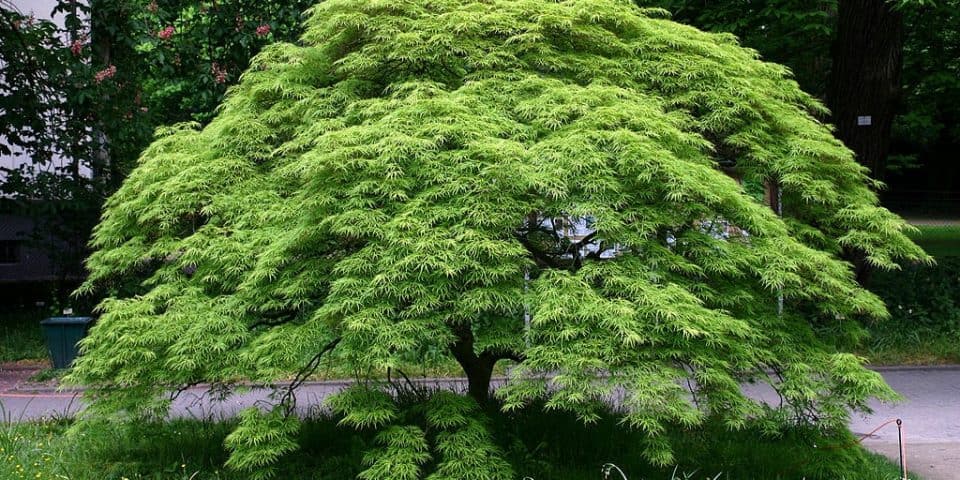Japanese maples have been cultivated for centuries as ornamental trees. Only growing to around 3 to 6 feet tall, their compact size makes them perfect for smaller gardens. Their leaves are enchanting, changing color with each season. Unfortunately, it’s not always possible to grow Japanese maples everywhere, so here are some look-alikes that will have the same impact in your garden.
Contents
Trees that look similar to Japanese maples in terms of foliage color, shape, and overall growth form include the Rocky Mountain maple, vine maple, witch hazel, western redbud, Canada red chokeberry, red-leaved hibiscus, and castor bean plant. Many of these can grow where Japanese maples cannot.
1. Rocky Mountain Maple
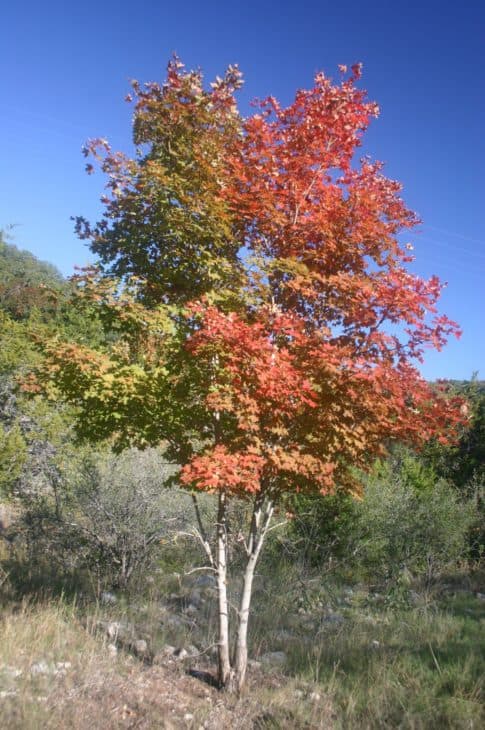
The Rocky Mountain maple – Acer glabrum – is native to western North America. They are hardy in USDA zones 5 to 10 (Japanese maples are usually only hardy in zones 5 to 8).
Like Japanese maples, they are relatively small trees. At most, they grow to around 30 feet tall. They have an upright growth form and an elegantly branching structure.
The leaves are a beautiful green on top and blue-green underneath. They have a characteristic maple shape with 3 to 5 lobes and serrated leaf margins. The leaves are not as finely cut as some Japanese maple species.
Like Japanese maples, they lose their leaves during winter. New leaves and flowers appear in spring, and during summer, they produce winged seed pods. During the fall, the leaves turn golden yellow.
Rocky Mountain maples prefer to grow in full sun or part shade, compared to Japanese maples that need a sheltered, shady spot to grow.
2. Vine Maple
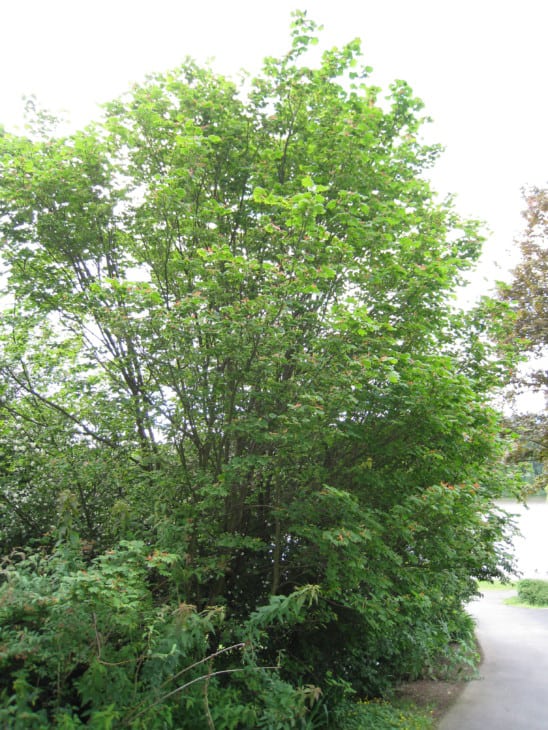
Vine maple, or Acer circinatum, is another maple that is native to western North America. It is very closely related to the Japanese maple and bears a striking resemblance. They are hardy in USDA zones 7 and 8.
Vine maples are small to medium-sized trees that generally grow 16 to 26 feet tall. Like Japanese maples, the multi-stemmed trunk can easily be bent and manipulated, making them suitable for bonsai.
The leaves are large and broad, with 7 to 11 pointed lobes. They are bright green during spring and summer and turn a vibrant yellow, orange, and red during fall.
During the spring, these trees flower, producing dark red little blooms. During summer, the winged seeds form. They have an interesting shape, with two seeds sticking out at 180 degrees.
Vine maples are happy in full sun but are shade tolerant, so they can grow in areas that you would otherwise grow a Japanese maple. Like Japanese maples, they are excellent for growing in containers.
3. Western Redbud
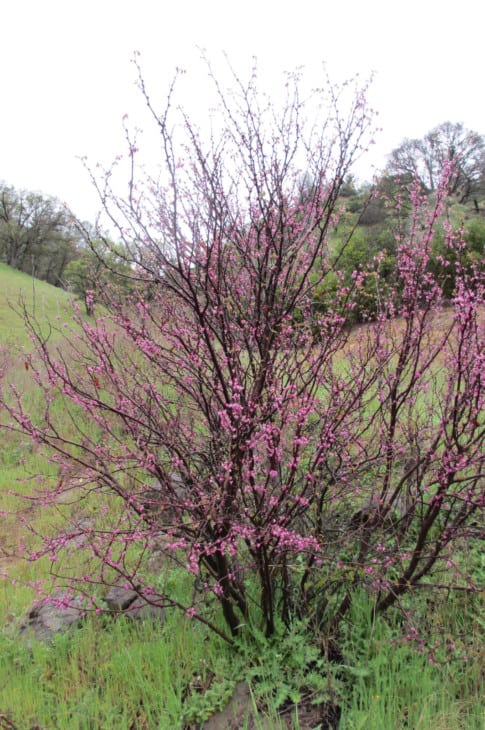
Western or California redbud, Cercis occidentalis, is a gorgeous ornamental tree that is native to the US. While not an Acer, this member of the Fabaceae family still bears a resemblance to Japanese maples.
They are relatively small trees that typically grow to around 10-15 feet in height. Their compact growth form makes them ideal for growing in small gardens. Like Japanese maples, they have multiple trunks that curve elegantly.
Like Japanese maples, they have bright foliage that changes color throughout the year. Heart-shaped leaves emerge in the spring. Initially, they are apple green but turn golden yellow going into summer, and then rusty red in the fall.
Early in spring, they produce masses of gorgeous blooms. The flowers are a brilliant pink magenta and are typically pea-shaped.
Western redbuds are happy in full sun to part shade and are hardy in USDA zones 7 to 10.
4. Witch Hazel
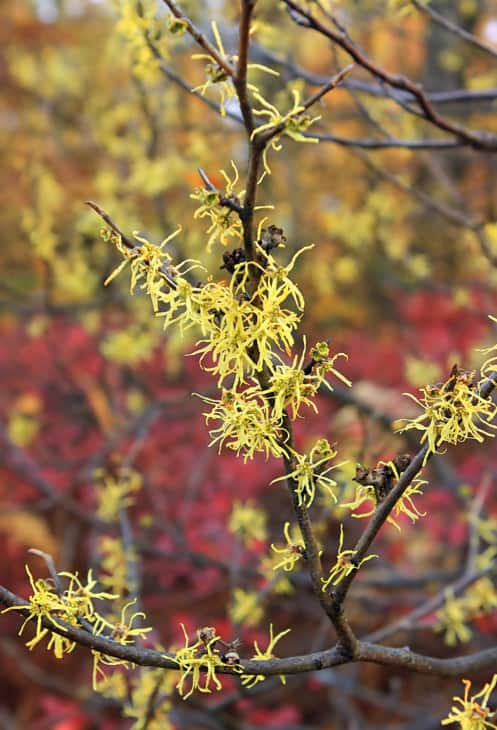
Witch hazel, Hamamelis virginiana, is a gorgeous shrub or small tree that brings color and interest to the garden all year round. Only growing to around 30 feet tall, they can easily be pruned to keep them compact for a small garden.
These upright growing trees have attractive branching, similar to Japanese maple. The leaves look quite different to Japanese maple. They are large and ovate with pointy tips and wavy leaf margins.
Witch hazel puts on a striking display in the garden during winter. They produce masses of delicate yellow ribbon-like flowers which have a beautiful citrus scent. During the fall, the leaves turn bright yellow.
These small trees are very easy to grow, are mostly pest-free, and require little maintenance. Witch hazels are native to North America and are hardy in zones 3 to 8. These adaptable plants can grow anywhere from full sun to full shade, like a Japanese maple.
5. Canada Red Chokecherry
Prunus virginiana ‘Canada Red’, or the chokeberry, is closely related to an ornamental cherry tree. These small trees are cultivated for their colorful foliage, which is why they resemble Japanese maples.
During the spring, the foliage is green, and clusters of little white blooms are produced. As summer approaches, the leaves turn a dark purple. In the fall, the leaves of the chokeberry turn an intense red-purple.
They generally grow to about 15 to 25 feet tall and have an upright, spreading growth form, with gorgeously arched branches, like a Japanese maple.
Canada Red chokeberry is very cold tolerant. It is hardy down to zone 2, so it can grow in almost any conditions.
6. Red-Leaved Hibiscus
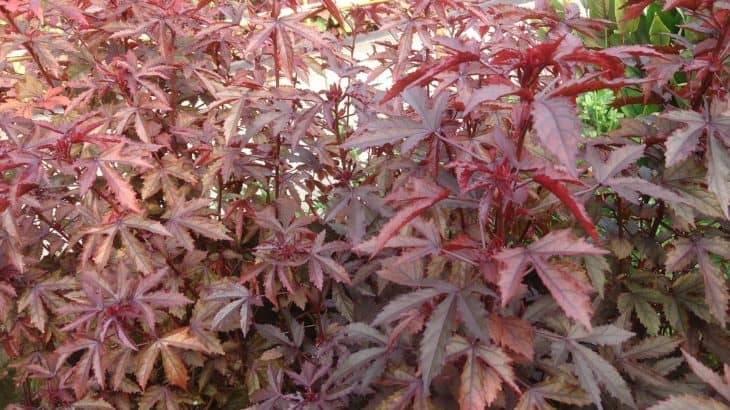
Hibiscus acetosella, the red-leaves hibiscus, is grown for its gorgeous colored foliage as well as its flowers. The leaves are similar in shape to the palmate leaves of Japanese maple. They are finely cut, almost lacy-looking, and are deep red to burgundy.
Native to East Africa, these fast-growing shrubs can grow to 5 feet tall in just one season. Red-leaved hibiscus is a great plant for when you need a focal element in your garden in a hurry. They can be grown in containers, like Japanese maples.
Red-leaves hibiscus is not tolerant of very cold conditions. In USDA zones 8 and 9, red-leaved hibiscus is grown as a perennial, but elsewhere it is grown as an annual.
7. Castor Bean Plant
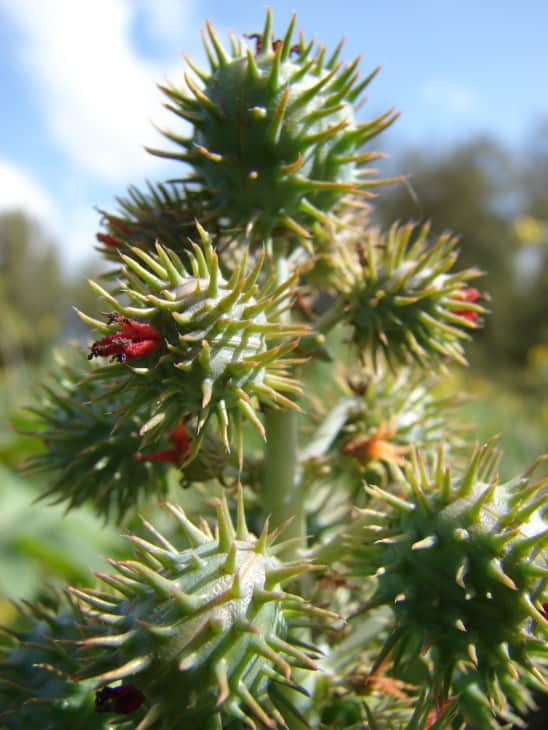
Ricinus communus, the castor bean or castor oil plant, is a tropical plant native to East Africa, the Mediterranean, and India. It is widely cultivated as a small ornamental tree for its colorful foliage and interesting fruits.
Castor bean plants have colorful foliage that is similar in shape to Japanese maple leaves. The large, palmate leaves are deeply lobed. They are red, purple, or bronze when they are young and turn darker green when they mature. The fruits of the castor bean plant are round and spikey. They are green to maroon in color.
Unlike Japanese maples, this plant is evergreen. It is hardy in USDA zones 9 to 11, but because it is not tolerant of cold weather, it should be grown as an annual elsewhere. They are fast-growing plants that can reach 10 feet tall in one season.

